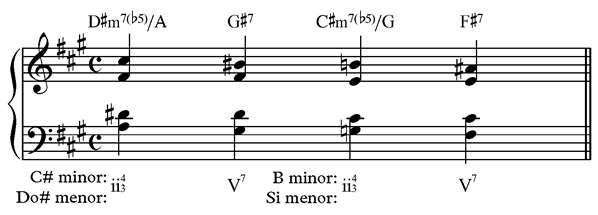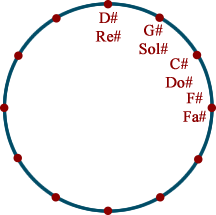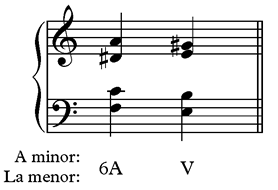Harmonic progressions in Bach's Chromatic Fantasy and Chopin's Prelude #8
José Rodríguez Alvira
Chopin's Prelude #8
In measure 3 of his Prelude #8 Chopin uses the II - V progression, first in the C# minor key, then in B minor. The four chords follow the cycle of fifths (D# - G# - C# - F#):


Much more interesting are the next measures. He starts with the same II - V progression but suddenly changes to a series of parallel dominant chords that descend chromatically:

How can we analyze this progression?
We have already seen that we can replace a chord of the circle of fifths progression by a dominant chord. But we can also use an augmented sixth chord. For example the progression II - V or V / V7 can become 6A (augmented sixth) - V:

We have used in this example a German sixth. Note that this chord is enharmonically equivalent to a dominant seventh chord (D# = Eb). In this example the chord would substitute a B dominant chord (dominant of E). The practical conclusion is that we can replace a dominant chord by another dominant chord (more precisely a German augmented sixth chord) that is a tritone away (F is a tritone away from B). In jazz music theory it is called tritone substitution.
What if we apply this to every other chord in the following cycle of fifths progression?
B7 - E7 - A7 - D7 - G7
E7 can be changed to a Bb7 and D7 to Ab7. Here's the progression (substituted chords in bold):
B7 - Bb7 - A7 - Ab7 - G7
These are precisely the chords used by Chopin. In this passage every chord has the double function of dominant and German sixth of the next chord. See our analysis of the Prelude for detailed explanation.
We will now see how Bach uses the cycle of fifth chord progression in his Chromatic Fantasy...